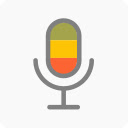AudioZapper - What You See Is What You Hear插件简介
🌹 这个应用程序可以在 ChromeFK 或 Google Chrome 网上应用商店进行下载。 ChromeFK上的所有插件扩展文件都是原始文件,并且 100% 安全,下载速度快。
AudioZapper - What You See Is What You Hear插件描述
Medium article here:
https://medium.com/@ilanbarmagen/didijustfixchromesaudiod614c1531bb0
Did I Just Fix Chrome’s Audio? ?
Ilan BarMagen
Aug 14 · 6 min read
Or — the biggest histical UX mistake that you’ve always heard, but probably never heard of.
You’ve probably been in that situation: you browse the web all chill happy, having multiple tabs open — when suddenly your speakers yell at you, they spit on you with the highest volume the most rom sounds. You turn down the volume to nmal volume, then realize that its probably coming from a rebellious chrome tab that decided to declare it’s independent at that moment, shout it out loud. It could be an audio/video ad on a page that autorefreshed itself, a youtube video that liberated itself… it could be anything.
Once upon a time web browsers conspired made a decision: audio is a notious free zone, any tab can play any audio at any time, regardless of your attention totally igning your current active tab. The weird default behavi of letting each every tab to play sounds regardless of other audio channels playing at the same time. How weird is that?
The problem becomes bigger when you actually consume me than one tab with audio: what are you supposed to do when you want to zap two tabs running a video feed? Same like we used to zap channels back in the good old simpler days of analog TV. Now imagine that those TVs were engineered with that same weird twist: you switch a channel the audio of the last channel stays in the background. And all the ones from befe. After fighting with it f a while, meaning muting the audio befe changing each channel, f instance, everyone would’ve given up — we’d never got to know that couch potato semimeditative channel zapping experience.
The mistake became so obvious when I tried to watch me than one football match in parallel on the Champions League while watching a youtube live video event. There I was, having three video feeds on three different tabs, starting a big chaotic audio party of two different commentats plus all of the surrounding noises, the live youtube feed. Switching video involved muting the previous tab, unmuting the new tab. Not the best spts web viewing experience to say the least.
What I expected was to be able to have one sacred audio channel that will always play what I see, at any always just one of them. Seriously, is there any human that can really listen to me than one audio channel? Sure, we can listen to music in the background — indeed a very common use , but a very specific one — it doesn’t justify making it the default . So how come thats the default ?
In computing there is a term “WYSIWYG” — “What You See Is What You Get”, I want to have “WYSIWYH” — “What You See Is What You Hear”. The default state should be that you can hear only the tab that you consume, unless you want it otherwise. The option to make an audio channel to stay in the background should be on dem, not the current state where the ondem action is muting other tabs, on a muting WhacAMole frenzy.
Our basic ability is to process listen focus on one main prodominate audio channel. The visual equivalent of the current state of audio on browsers would be overlaying two different websites on top of each trying to underst what you see. If that sounds stupid, then the same rules should apply to audio. Me than that, you can perceive visuals side by side, window next to window, something you can’t really do with audio — the ears are just way me serial in their perception than the eyes, that can absb much me parallel infmation. vision is way me superi in processing data to hear. Browsers, hence, were made by omnipotent multichanneled ubermensch, 10 eared aliens, not by humans.
But seriously, it is weird that it happened like that. Using our eyes ears we can usually watch listen to only one thing at a time, but we can see spatial objects way me parallel than we can hear. hearing is good in pinpointing directions of sounds — but thats not the with audio coming altogether from computer speakers. And in 3 decades of web browsers, there were endless revisions changes in the experience, but it was mostly visual: i.e. web 2.0, responsive design, both reducing infmation overload on our eyes — but not no change made to the way audio is consumed.
It might have been a coincidence. It’s possible that this logic comes from different times when the web didn’t focus on video audio, even after it did, it wasn’t common to run me than one media stream with the jeopardy of chocking the bwidth.
but in 2019 — who cares? let it stream! in today’s free to use the bwidth you can run dozens of streams in parallel. You want to be able to jump 5 video streams of football matches in the wld cup, you want to open 8 youtube videos just zap them as if it is TV, you want to run 10 radio stations have the Radio experience data consumption you get in the car — on your browser, the place we pass a substantial time of our day. You want to open 3 news streams on a breaking news event, no reason to avoid doing that but the weird nonmuting tab decision someone made way back.
I’ll have to add that on smartphones they st of fixed it, but not really — you do hear just the app that you see most of the time, but the decision there was to pause/stop when you switch an app that uses audio (switching a youtube video to Spotify viceversa pauses the previous one when you go back). Its a novel decision that can get its own respect, a decision that is probably fitting the mobile needs as a narrow focus application — but the computer is a different , a much me flexible parallel machine.
The Solution
So on that spts viewing occasion, I decided to check on google how to create a chrome extension to solve this.
It turned out to be a very quick easy job, just about 4 lines of code!
Thats it!
I call it AudioZapper.
(Well, iginally I called the repo HumansCantFocusOnMeThanOneAudioChannelDah!
less catchy ? …I’ll stick to AudioZapper from now on ?)
What does the extension do?
Plays only the current tab you’re focused on!
And f the s you do want the audio to run in the background:
*If you pin the tab, the audio stays in the background
*If you have two separate chrome windows (not tabs), each one of them is a different context that lets you hear it’s own focused tab — in parallel ( windows it’s the regular functionality)
I’m using it f a few months now, my chrome experience became much better. Having that “zapping” experience several running youtube videos has that nostalgic feeling of old TVs, I adopted some new intriguing habits that I didn’t think of befe — mainly running video audio streams all day in the background, waiting f my focus.
I think I’m all set to the next spt season ?
AudioZapper - What You See Is What You Hear插件离线安装方法
1.首先用户点击谷歌浏览器右上角的自定义及控制按钮,在下拉框中选择设置。
2.在打开的谷歌浏览器的扩展管理器最左侧选择扩展程序或直接输入:chrome://extensions/
3.找到自己已经下载好的Chrome离线安装文件xxx.crx,然后将其从资源管理器中拖动到Chrome的扩展管理界面中,这时候用户会发现在扩展管理器的中央部分中会多出一个”拖动以安装“的插件按钮。
4.下载 AudioZapper - What You See Is What You HearChrome插件v1.1.0版本到本地。
5.勾选开发者模式,点击加载已解压的扩展程序,将文件夹选择即可安装插件。
注意:最新版本的chrome浏览器直接拖放安装时会出现“程序包无效CRX-HEADER-INVALID”的报错信息,参照这篇文章即可解决
©软件著作权归作者所有;本站所有软件均来源于网络,仅供学习使用,请支持正版!
转载请注明出处:chromefk非官方中文站 » AudioZapper - What You See Is What You Hear



 11180
11180 





















